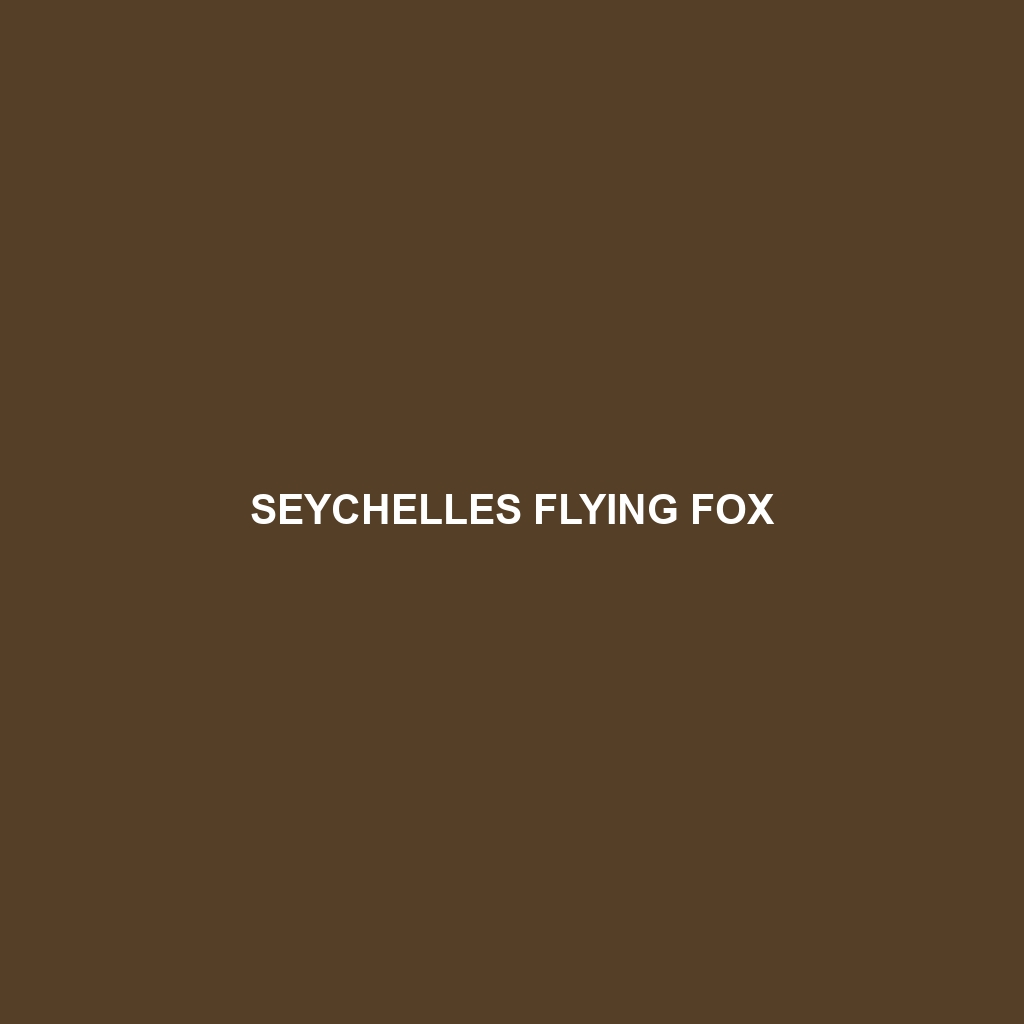Seychelles Flying Fox
Common Name: Seychelles Flying Fox
Scientific Name: Pteropus seychellensis
Habitat: The Seychelles Flying Fox is predominantly found in the lush forests of the Seychelles Islands, particularly on Mahé, Praslin, and Curieuse. These bats thrive in tropical rainforest environments, often roosting in large colonies in the canopy of tall trees, where they can easily access their food sources. The habitat is characterized by a warm climate and abundant flora, making it an ideal location for these fruit-eating bats.
Physical Characteristics: The Seychelles Flying Fox reaches a wingspan of up to 1.2 meters (approximately 4 feet) and can weigh between 500 to 600 grams (about 1 to 1.3 pounds). They exhibit a unique color pattern, with a dark brown or black fur covering their bodies and a distinctive golden-brown fur around their necks. Their large eyes and long snouts are adapted for their frugivorous diet, making them easily recognizable among other bat species.
Behavior: Seychelles Flying Foxes are primarily nocturnal, emerging at dusk to forage for food. They exhibit social behaviors by roosting in large groups, which can number in the hundreds. These bats are known for their agility in flight and their ability to navigate through dense forest canopies. Communication among the colonies includes various vocalizations, which help maintain group cohesion and alert others to potential threats.
Diet: This species primarily feeds on fruits, including figs, bananas, and other tropical fruits, which are abundant in their natural habitat. The Seychelles Flying Fox plays a crucial role in seed dispersion as it consumes fruits and subsequently scatters the seeds throughout the forest, aiding in plant reproduction. Their feeding habits are integral to maintaining the health of the ecosystem.
Reproduction: The Seychelles Flying Fox typically breeds once a year, with mating seasons occurring during the rainy months when food is plentiful. After a gestation period of approximately 5 months, females usually give birth to a single pup. Maternal care is strong, with mothers often seen nurturing and protecting their young within the safety of the roosting colony.
Conservation Status: The Seychelles Flying Fox is currently classified as ‘Vulnerable’ by the International Union for Conservation of Nature (IUCN). Major threats to its population include habitat destruction, hunting, and climate change, which directly impact its food sources and roosting sites. Conservation efforts are crucial to protect this unique species and its habitat.
Interesting Facts: Despite their intimidating size, Seychelles Flying Foxes are harmless to humans. They’ve been known to live for over 15 years in the wild, and their presence is often considered a sign of a healthy ecosystem. Interestingly, these bats can consume large amounts of fruit in a single night, often leading to the dispersal of seeds over various locations.
Role in Ecosystem: The Seychelles Flying Fox is a vital component of its ecosystem, primarily serving as a seed disperser for many fruit-bearing plants. By facilitating plant growth and reproduction, these bats contribute to the biodiversity and resilience of the forests in the Seychelles. Their interactions with various plant species underscore their importance in maintaining ecological balance.
